REPULSION (1965)
A beautiful manicurist suffering from androphobia experiences frightful hallucinations after her sister and roommate takes a holiday to Italy...
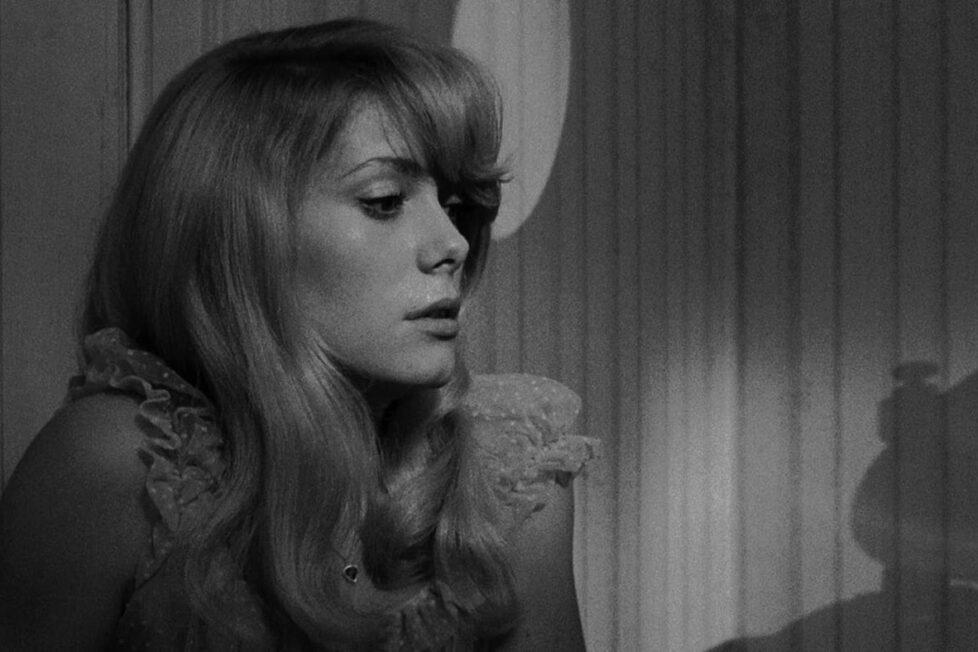
A beautiful manicurist suffering from androphobia experiences frightful hallucinations after her sister and roommate takes a holiday to Italy...


Roman Polanski’s second feature opens and closes with eyes. In the beginning, an extreme close-up lingers on the eye of Carol (Catherine Deneuve); only slowly does the camera move back to reveal she’s sitting at the side of an elderly lady, lying immobile and corpse-like, and at first we wonder if Carol’s working in a hospital or mortuary until we realise the lady has a face pack and the location is a beauty parlour.
Although many directors use eyes to signify seeing or voyeurism, Polanski has other intentions: the overwhelming impression given by Carol’s isolated eye is one of animal fear, and it has an unnerving, even alien quality, as flesh and body parts do elsewhere in the film—especially hands. We see Carol holding the hand of the not-dead woman, too.
The film ends with a close-up of Carol’s face in an old family photo: a tantalising kind of quasi-flashback where the girl seems to be looking not at the photographer but at her father, both angrily and warily. This has, for decades, frequently been interpreted as telling us that Carol’s father was abusing her as a child and suggesting that the repulsion of the title has its origins here: Carol is both repelled by the world (especially by men and sex), and herself attempts to repel it. But Polanski himself has refused to be drawn on the question, and says in one of the extras on Criterion’s new disc: “Don’t ever ask me to explain any of my pictures.”
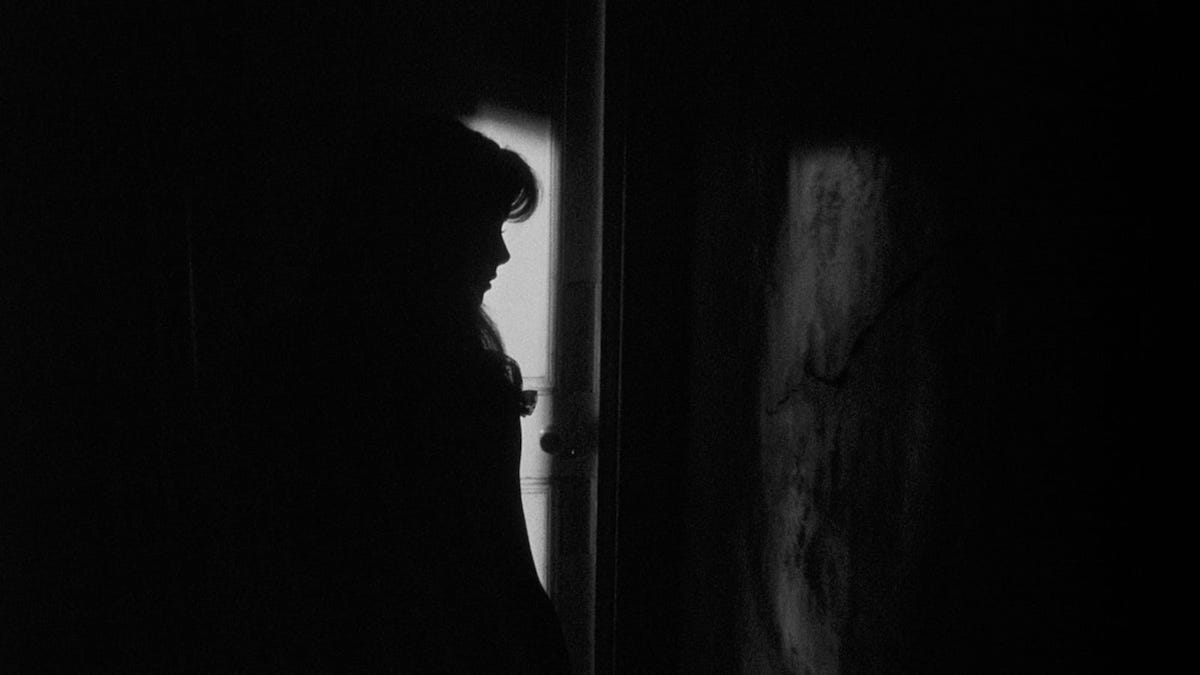
Repulsion is set in 1960s London, where the Polish Polanski had recently moved after a period in France. Carol, a young Belgian woman, lives unhappily in South Kensington with her rather domineering sister Helen (Yvonne Furneaux). “We all have to lead our own lives in the end, you know,” Helen lectures her, but living appears to be difficult for Carol. There seems to be a lack of meaning in her life, but it’s not clear she even wants meaning. Pursued by a suitor, Colin (John Fraser), Carol can’t summon the energy to conclusively brush him off, but hurries to wipe her lips and clean her teeth—rid herself of his traces—after he tries to kiss her in his car. Lying in her single bed, she hears Helen and her married boyfriend Michael (Ian Hendry) having sex (ground-breakingly daring sounds for movies of the time).
Not a great deal happens in terms of plot in the early part of the film. Indeed, much of the movie comes across as a rather affectless depiction of one event after another, rarely setting up tensions or sympathies in the way most films do; it’s as languid as Carol herself. Polanski said in his interview with Joseph Gelmis for his book, The Film Director as Superstar (1970), that he wasn’t interested in surprising the audience. However, as with the more energetic Knife in the Water (1962) and the wryer The Tenant (1976), both films it shares ideas with, Repulsion is highly successful in setting up an atmosphere of unease, creating a sense of something unspokenly wrong. Whether it lies in Carol, or whether it is an external threat, is not yet entirely clear.
When Helen and Michael go away on a trip to Italy, Carol loses one of her few anchors to normality, and her instability becomes more extreme—or at least more obvious to the audience. (Repulsion is emphatically not a portrayal of a mentally healthy person suffering a breakdown; it is apparent that Carol has had problems long before the movie begins.) The flat she shares with Helen becomes increasingly filthy and chaotic; a rabbit, half-prepared for dinner but never cooked, is left to rot, and unused potatoes start to sprout. Polanski shoots these repeatedly in close-up, and as with Carol’s eye at the beginning, the effect is disturbing.
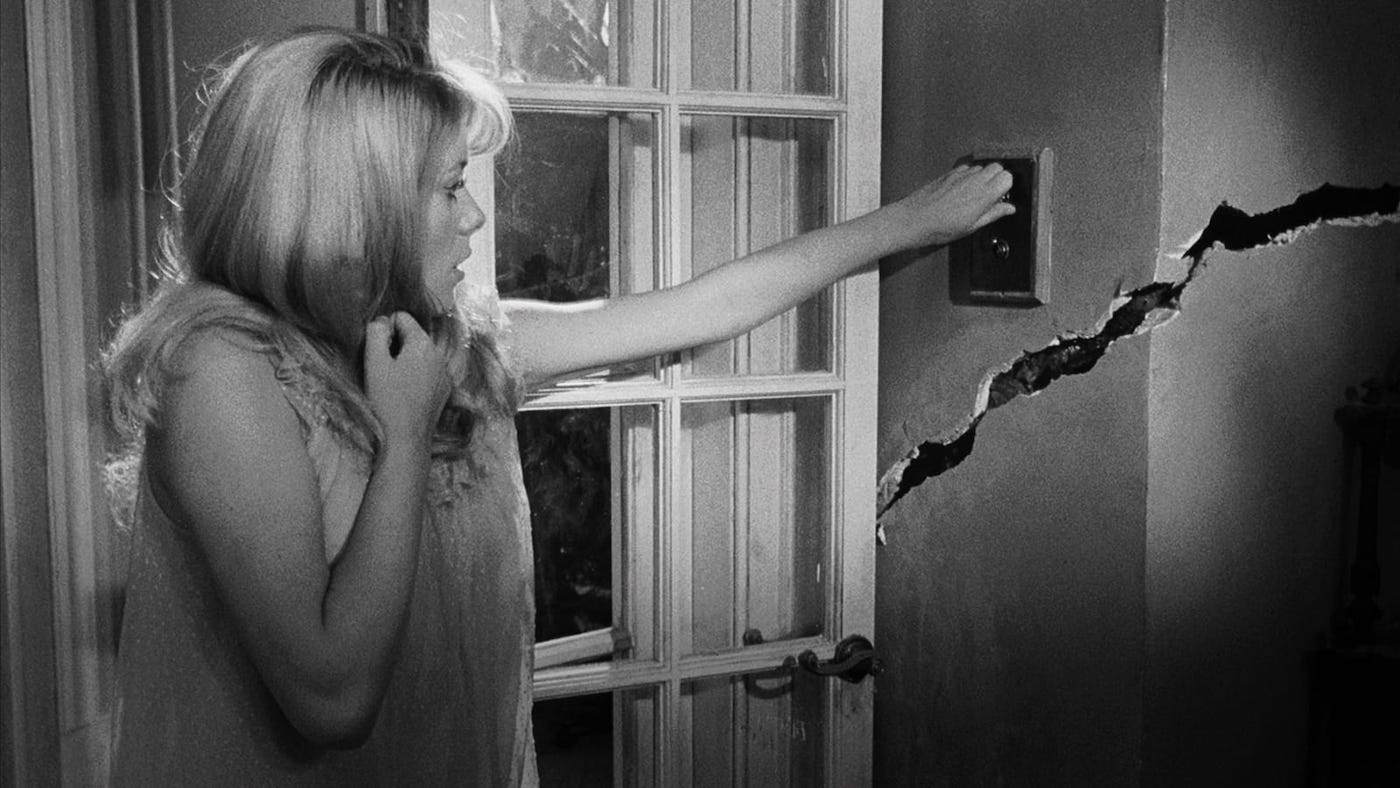
Carol spends her time gazing at mundane items (her own reflection in the curve of a kettle, for instance, or that family photo). She irons garments with an unplugged iron. She’s made physically sick by Michael’s own discarded clothing. The apartment itself seems to become sinister, there are inexplicable phone calls, and there is a great moment—a crucial one in Repulsion, perhaps marking the transition from semi-reality to delusion—where Carol flicks a light switch and the whole wall cracks in front of her.
Like other cracks shown in the film, this is doubtless symbolic. So are the way that the walls become soft and clay-like (nothing is dependable any more) and the hands that later reach from them—however much she tries, Carol can’t escape the attentions of others, though her own hand, emerging from under a bed near the end of the film, also implies that she may have some residual need to reach out to other people.
But not everything in Repulsion’s rendering of Carol’s disturbed mind has specific meaning like the cracks and the hands. A shot of an air vent is full of foreboding, for example, but it’s simply an air vent as perceived by Carol; likewise, when the dimensions of the flat become distorted toward the end (a remarkably successful visual effect), we maybe don’t need to read too much into the elongation of the rooms.
Likewise, Polanski isn’t overly concerned with explaining why Carol has these delusions, only that she does, and in its determination to avoid overt psychoanalysis Repulsion takes a very different tack from Hitchcock’s Psycho (1960), a film which it otherwise starts to resemble when Carol finds Michael’s razor and kills for the first time.
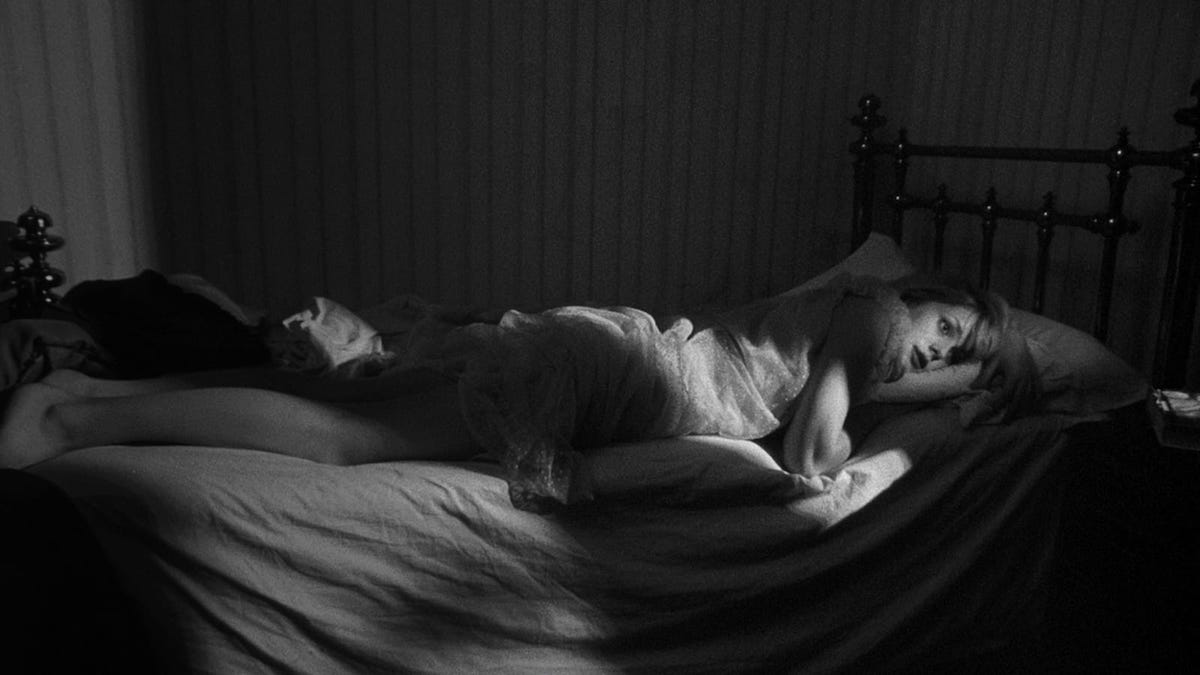
Though Carol looks vaguely satisfied while killing, as if finally dealing with a long-overdue chore, it is important to Polanski and co-writer Gérard Brach (a frequent collaborator) that her actions are not reducible to an obvious cause. Indeed, the director decided to cut one murder from the movie precisely because it would have seemed too rational. Unlike in Psycho, too, the murders are shot fairly matter-of-factly, even if the thick monochrome blood is as intensely physical as the rotting rabbit.
Much as in The Tenant, all this is contrasted with an outside world that’s often excessively cheerful and certainly oblivious to Carol’s turmoil. When she tells a bouncy colleague (Helen Fraser) that she’d missed work to stay at home, Bridget remarks “that’s enough to drive anyone up the wall.” Later, the landlord (an excellent Patrick Wymark) remarks of the flat that “this is a flaming nuthouse”… but he’s only talking about the mess.
Colin’s sexist friends in the pub (among them a droll Hugh Futcher) discuss Carol as nothing more than a girl to be pursued, in much the same manner as Trelkovsky’s colleagues joke in The Tenant. And when Carol’s murders finally come to light, the residents of the building gather excitedly but completely fail to grasp what has happened to her; calling for a restorative brandy is all they can think of.
There are occasional touches in scenes beyond the flat which allude to the increasing strangeness and darkness of Carol’s existence—the odd repeated detail of the three old men roaming the streets playing music, for example, or the way the filthy staff room beneath the beauty salon hints at something nasty beneath the glitzy surface of Swinging London—but just as Carol seemingly prefers her own inner world to the outer one, it is in portraying this that Polanski excels.
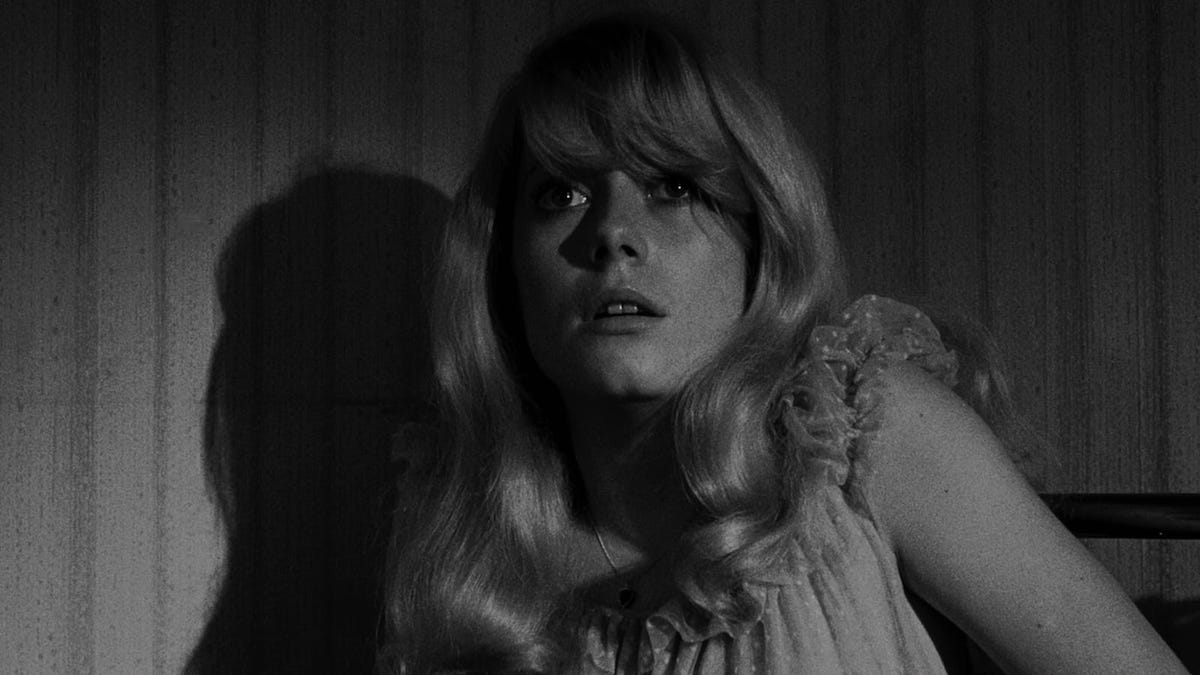
He and cinematographer Gilbert Taylor take care to make virtually every frame interesting, sometimes with long-held shots of ordinary objects, at other times with complex compositions: a common set-up in Repulsion involves the camera in one room of the flat, Carol is seen through the door frame in the next room, a window beyond her, and then a view through that window. To us, she’s precisely located both within her home and in relation to everything outside, even as her own perceptions of both become progressively more askew.
There are also touches of out-and-out horror—most notably a spine-chilling glimpse of a nonexistent man in Carol’s mirror, just for an instant and easily missed by the viewer—and more prolonged nightmare (or hallucination) sequences of rape, intensely physical yet not quite physically realistic. Then, of course, there is the flesh-horror of the decaying rabbit or the news story on the radio about a government minister finding eels in his sink, precursors of the raw liver in Polanski’s Rosemary’s Baby (1968) (and for that matter all the gore in his 1971 Macbeth; the bloodiness of that film has often been linked to the murder of his wife Sharon Tate and their unborn child by the Manson Family in 1969, but such imagery clearly held a fascination for Polanski earlier).
And the horror in Repulsion often comes from sound as well—or its absence. A rape sequence might be completely, discomfitingly silent, but at other points, there’s a near-constant presence of clocks ticking in the background, church bells outside, and flies buzzing, all of them reminders Carol can’t fully retreat from the world into herself however much she might want to. Music is absent for much of the time but Chico Hamiton’s jazz score offers comment at key points; the use of a mournful solo flute is particularly effective, and characteristic of the innovative Hamilton.
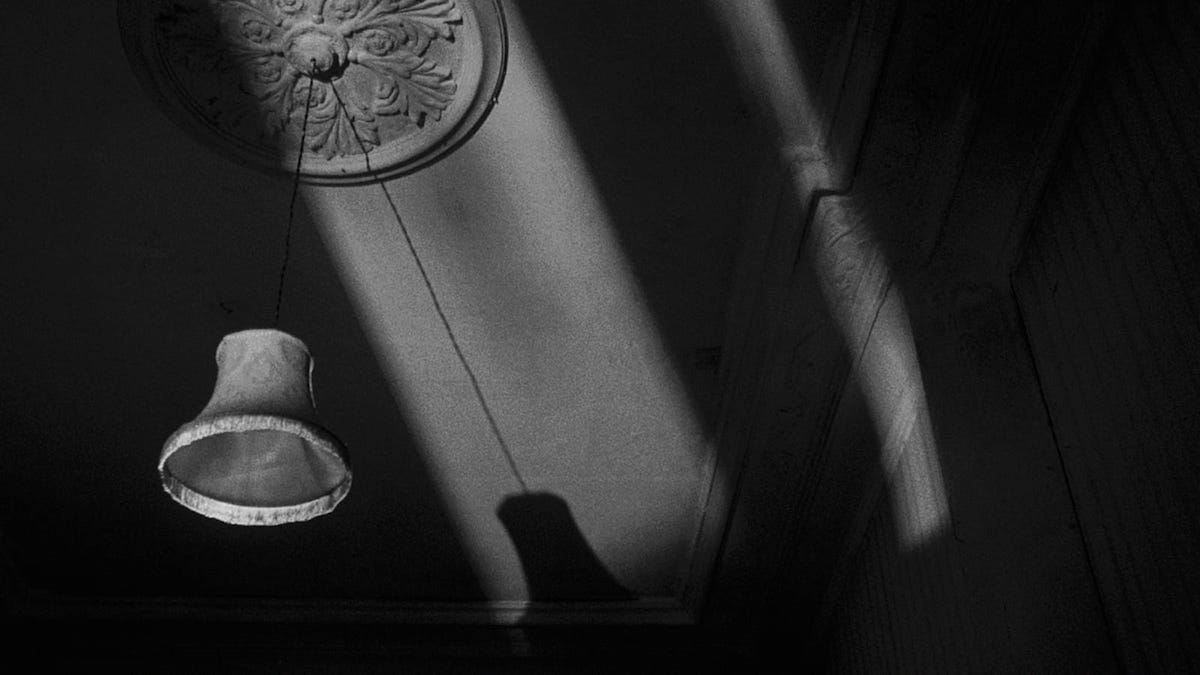
Repulsion is largely a director’s (and cinematographer’s) film, rather than one that offers great scope for actors to add their own stamp. But its intense concentration on Carol means that impressions of the movie are inseparable from impressions of Deneuve in that role: silent, drained and passive, with bursts of hysterical energy. Among the supporting cast, Wymark’s landlord is perhaps the best. The way his aggression turns to fake concern when he thinks he has a chance at seducing Carol is creepily plausible (his hand lingers on her just a little too long), and seen now it noticeably anticipates characters in Alex Garland’s Men (2022), a film that may well have drawn on Repulsion for inspiration.
So does the reaction of Michael when Helen finds a body in the flat—his first instinct is to slap this irritatingly distressed woman in annoyance, rather than comfort her or even investigate—and again this fits into a repeated Polanski pattern: the emotionally abusive husband played by Leon Niemczyk in Knife in the Water and the boorish Scope (Bernard Fresson) in The Tenant are similarly obnoxious men.
Though Polanski wasn’t totally happy with Repulsion, even six decades after its release it remains one of the most significant works in his filmography, and (like Knife in the Water) marks out many of the themes that drove him from his first student short (1957’s Morderstwo / Murder) onward: isolation, alienation, madness, restrictive spaces, rape, sex, death. It is sometimes seen as the first instalment in an “apartment trilogy”, followed by Rosemary’s Baby and The Tenant, and indeed Polanski acknowledges in the commentary here that the flat “is a character in the film”.
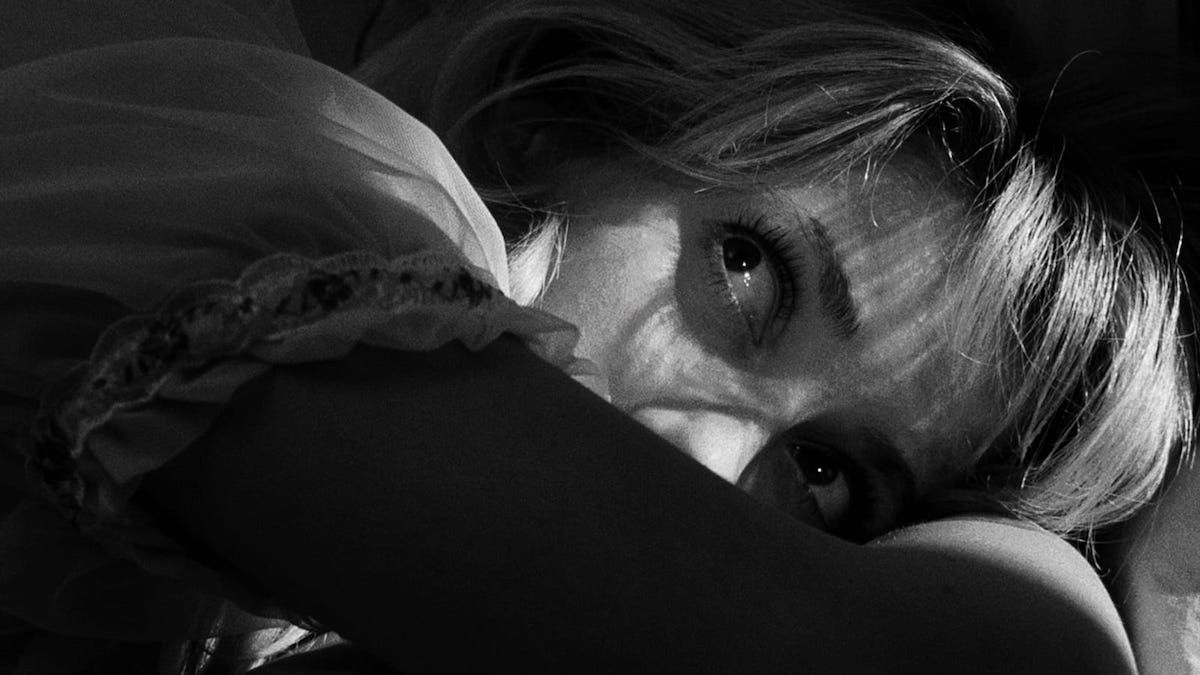
It could equally be seen as the first in a series where he presents a city through a foreigner’s eyes, with Repulsion’s London followed by the Manhattan of Rosemary’s Baby and then the Los Angeles of Chinatown (1974). (This also suggests a comparison between Repulsion and Michelangelo Antonioni’s Blow-Up of the following year—another movie where a non-British director presents a character in their London home becoming increasingly disconnected from objective reality.)
Perhaps more significantly, Repulsion helped form Polanski’s reputation as an arthouse director who also specialises in horror, even though comparatively little of his output is actually within the genre.
It had been made for Compton Films, a company more associated with exploitation and porn, and although Repulsion could certainly be viewed superficially as having elements of the former, the producers were surprised by what they got. “It’s like ordering a Mini Cooper and winding up with a Rolls,” Compton’s Tony Tenser reputedly said.
But the surprise was a good one; the low-budget production performed very creditably at the box office for a movie of its type. Audiences and critics then, as now, recognised Repulsion as a strikingly powerful portrayal of mental deterioration, and Criterion’s reissue—despite its rather limited extras—is a fine showcase for this landmark film in psychological horror.
UK | 1965 | 105 MINUTES | 1.66:1 | BLACK & WHITE | ENGLISH


director: Roman Polanski.
writers: Roman Polanski, Gérard Brach & David Stone.
starring: Catherine Deneuve, Ian Hendry, John Fraser & Yvonne Furneaux.
